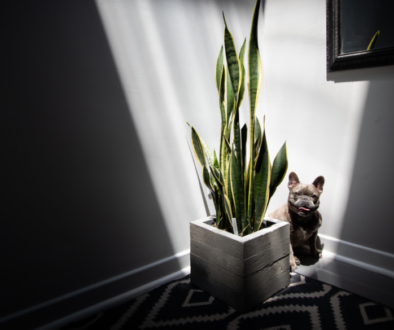Tool/ Storage Closet Build
How I transformed one of our downstairs closets in order to maximize storage. Living in a loft is amazing, but it can be very difficult to find storage. And since we don’t even have a garage, it is very difficult for me to properly store and organize tools. To get the most out of this closet space, I built multiple shelves with simple wood brackets and a peg board area for hanging and displaying tools.
All Materials Used
- Pieces of particle board (particle board is typically cheap and sturdy)
- A piece of peg board (I used peg board with a smooth/ glossy white surface. You can also use a different material such as this metal one)
- Wood strips (I used some that are 1 1/2 inch wide by 1/2 inch thick)
- A box of screws for attaching wood strips to wall studs (I used drywall screws since they are easy to work with)
- 4-6 screws to attach the pegboard to the wood strips (I used gold/ brass screws since I knew that they would be visible and in plain sight)
- 4-6 washers to fit on the screws for the peg board (this helps hold the peg board tighter and keeps the screws from digging into the peg board too much)
- Peg board accessories (you can buy packages of all different hooks and baskets for hanging tools on peg board)
- Glue (I used a tube of construction glue called Liquid Nails)
- Paint (optional)
- Paint brush and/or paint roller (optional)
- Electric drill
- Circular saw
- Stud finder (or just a simple magnet will work- see below)
- Tape measure
- Leveler tool
- pencil or marker
- Storage bins (optional)
- small floor shelf to hold powers tools (optional) from Ikea
Tips and Recommendations
- The measurements for this project depend on the size of closet you have and how many shelves you want. I started by measuring the height and length of the largest storage bins I had. I used those measurements to gauge the distance between each shelf and, therefore, the length that each wood strip would have to be. I wanted to maximize the amount of shelves I could fit in the closet, so I added them from floor to ceiling. Add as many, or as few, as you find suitable.
- I knew ahead of time that I wanted to add a Ikea shelve at the base of the peg board area to house my large power tools. I made sure to make the peg board stop at where the top of the shelve unit would be. Once I knew how large of a peg board area I would have, I knew how big the wood strips needed to be in order to frame the outside edge of the board at the posterior. I did strips around the outside edges as well as one across the middle in order to prevent any sagging of the peg board.
- You can use a nail gun instead of glue to attach each shelf to the wood strips and to attach the wood strips to the studs (I don’t own a nail gun.. yet)
- Painting the wood and walls are optional, however… don’t be lazy! It will look much more aesthetically pleasing and better for resale appeal. Try to use a durable paint since the shelves will most likely get a lot of physical contact. A higher sheen is more durable. Try to use at least satin or semi gloss if you can. I simply used some leftover paint that I had from previous projects. I went with a white for the walls and wood strips and a grey for the shelves.
- If you don’t have a stud finder, you can always use a simple magnet to locate the wall studs. This works because all of the drywall in a home is typically attached to the studs using metal drywall screws. For the most part, where you find the metal is where the drywall screws/ studs are. Sometimes I will even use a stud finder and also verify there are studs by locating the metal screws with a magnet. Also, it is a good way to make sure there isn’t a screw located directly under where you are trying to drill a hole. To get an idea of the general area of a stud, look up in Google the common distance between wall studs in your region. The studs will typically be this distance from the corners of rooms. Also, most of the time electrical outlets and switch boxes are located next to a wall stud. Once you know a general area, you can run the magnet along the wall until it sticks.
- Be sure to pre drill a hole smaller than the size of each screw you are using. if you don’t, the wood strips will split fairly easily.
If you liked this post, feel free to share it!


